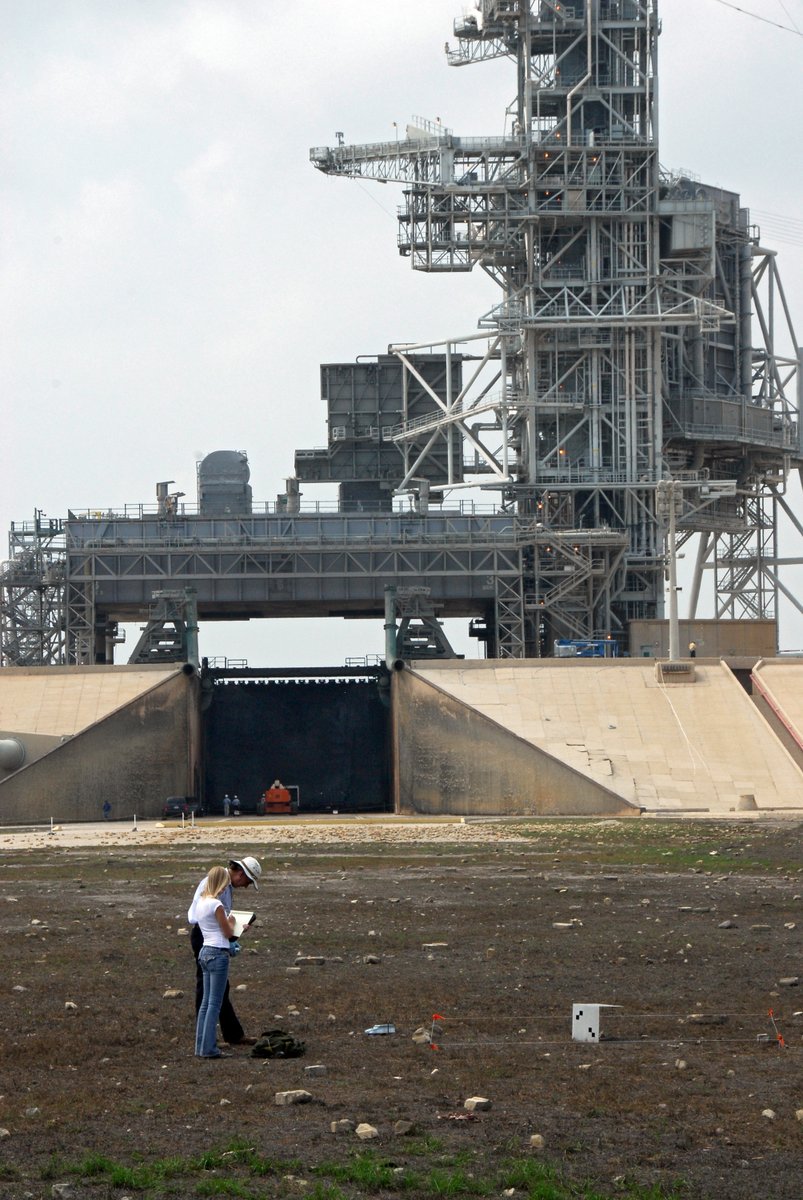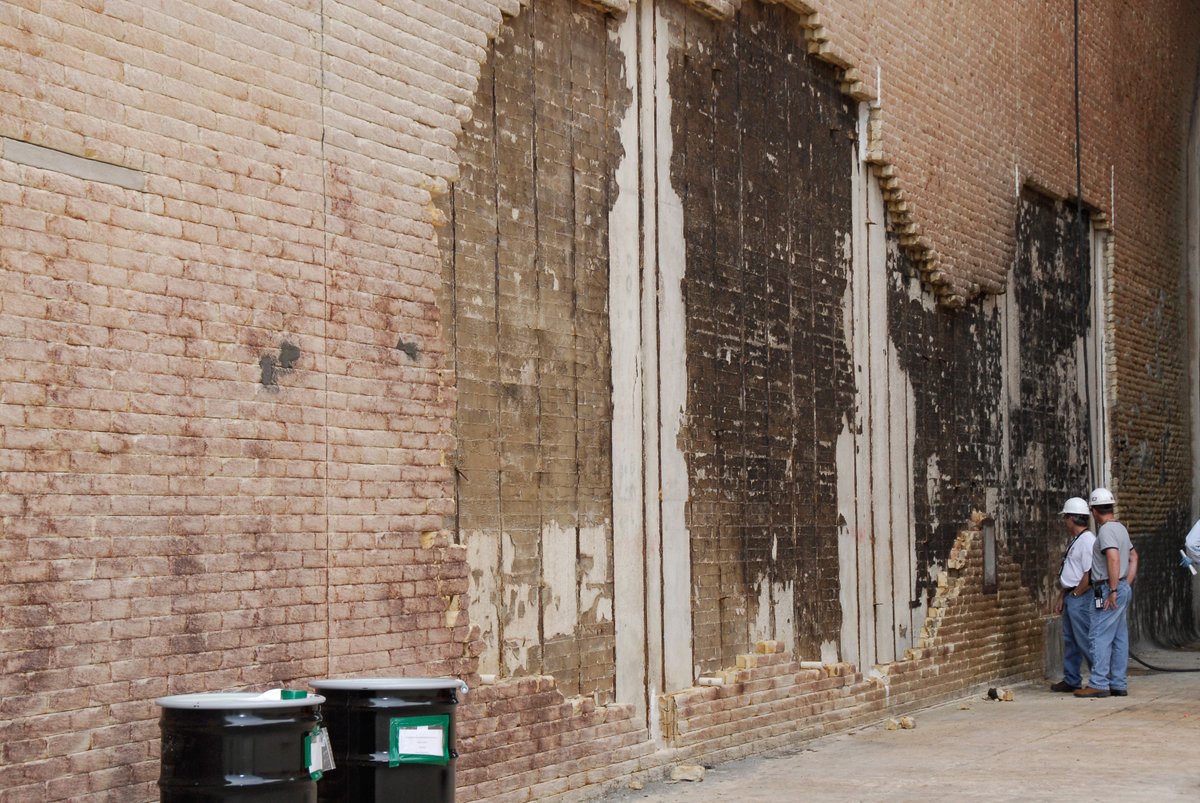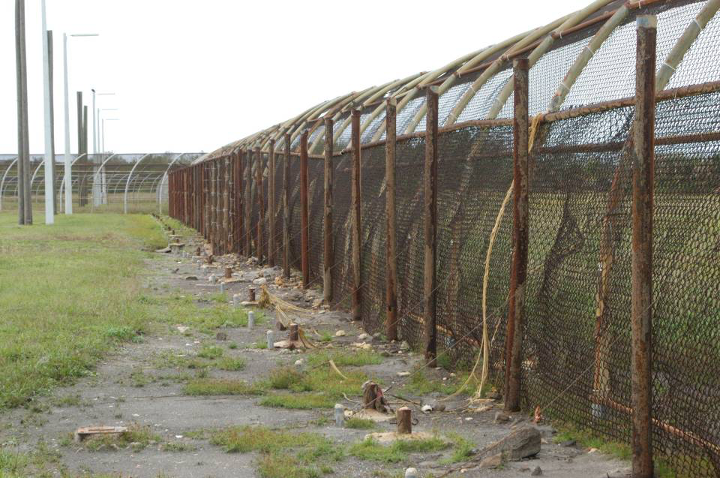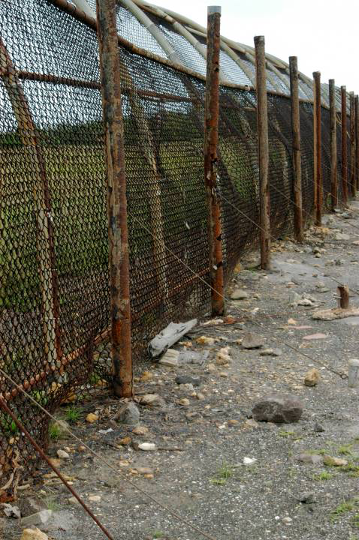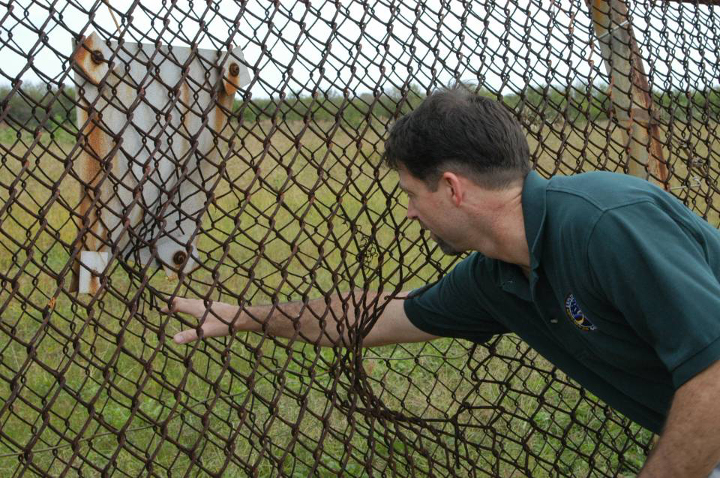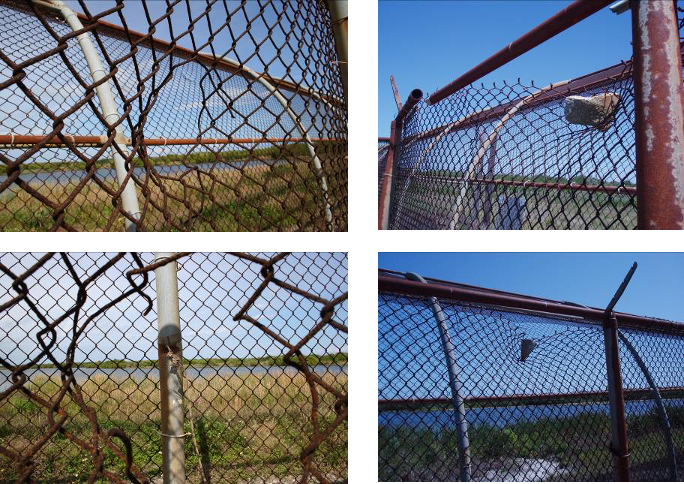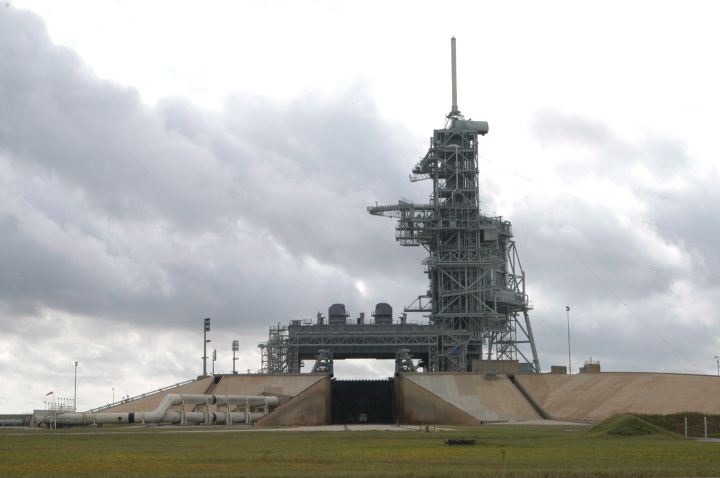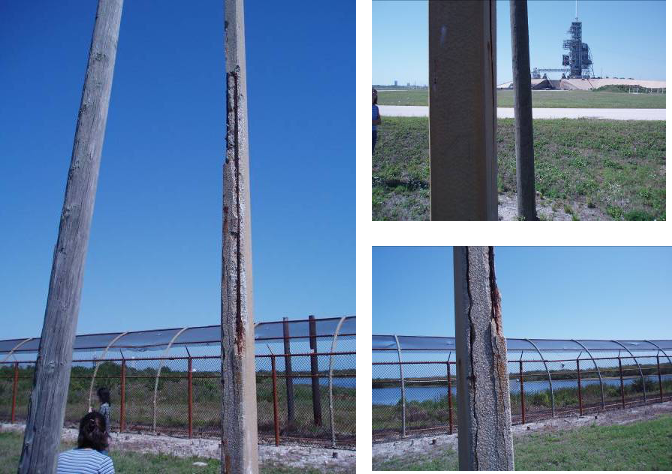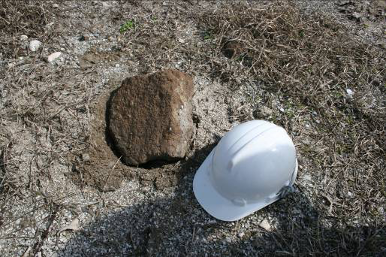Even though a flame trench is made of concrete and bricks, it is a technological marvel of rocket science. We pay rocket scientists with sophisticated computer modeling to help design them. https://twitter.com/torybruno/status/1247220864254386181">https://twitter.com/torybruno...
2/ Think how much gas has to squeeze through that narrow trench! The momentum flow of the GAS equals the acceleration of the ROCKET. It& #39;s enough gas to give a giant rocket a kick-in-the-butt to nearly instant speed. (That is @Ryan_N_Watkins measuring bricks blown out by the gas.)
3/ In Space Shuttle mission STS-124& #39;s launch, the force of all that gas squeezing between the brick-lined walls ripped over 3000 fire bricks off the walls and turned them into instant rubble, spreading them over several square kilometers behind the launch pad.
4/ This is what the Space Shuttle launch pad perimeter fence looked like after a normal launch. Note all the rubble? That was pieces of the launch pad blown out by the rocket exhaust plume. If it can kick-start a giant rocket, it can also rip apart concrete and brick.
5/ You& #39;ll notice there isn& #39;t any grass growing right there. That& #39;s because the rocket exhaust of solid rocket boosters is acidic. The rocket exhaust was driven into the concrete rubble, then it leached out by rain into the ground. Florida& #39;s grass likes basic soil, not acidic.
6/ Here is another view of the perimeter fence after a normal launch. See the rusty old fence posts in front of the newer fence, plus other posts cut off near the soil? That& #39;s because the pummeling of rubble kept damaging the fence, so it needed to be periodically replaced.
7/ That& #39;s me reaching through a hole that was blown into the fence by a chunk of concrete ripped out of the launch pad by the rocket exhaust. The concrete then bent the newer fence behind the older one, and bent up the sign. This was NORMAL. This was not a launch pad failure.
8/ Some more examples of chunks of concrete being ripped out of the flame trench by the rocket exhaust gas, blasting into the fence about 1 km away. Sometimes the boulder was still stuck in the fence. This was not a good place to watch a launch from!
9/ For perspective, I took this picture with my back to the same fence to show how far away the launch pad is. That is a large truck inside the flame trench, for scale. Imagine the boulders ripping out of the flame trench then flying this distance before slamming into the fence.
10/ It wasn& #39;t just the perimeter fence that got damaged. Here is a concrete light pole that was shattered by a boulder-strike. Notice the sacrificial wooden pole that was supposed to protect it. Bad luck: the boulder barely missed the wooden pole and still hit the concrete one.

 Read on Twitter
Read on Twitter